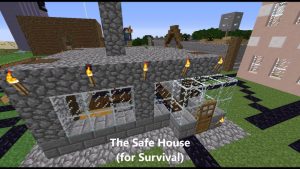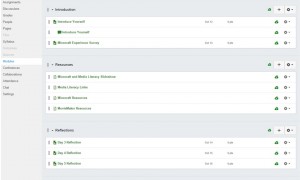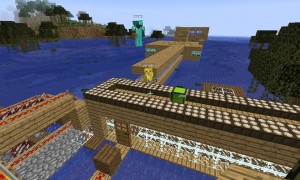The school year is almost half over! Here’s how things stand presently. We had some students back in the buildings last fall (some special education [SPED] and English language learners [ELL]), but when COVID-19 infection rates went up, we went back to 100% virtual. I am really thankful that our district is looking out for our safety. A very large neighboring district, which shall go unnamed, still has some students and teachers in the buildings. I’m very grateful that I don’t have school-age children of my own, as that’s a whole ‘nother can of worms, as we say around here.
I am still working almost 100% remotely. I go in for the Bookmobile on some Mondays, and when our Library Assistant is out I go in to pull book holds for students when they come up. We don’t have many students who come out to the Bookmobiles, but the number of books on hold is increasing, and the number actually picked up is increasing, too.
I liken my work this year to that old story of the man and the starfish on the beach. Once upon a time, a man saw hundreds of starfish stranded on the beach at low tide. He started picking them up and throwing them back into the ocean so they wouldn’t die. Another man came along and commented that it wouldn’t make any difference — the other man couldn’t possible throw all of those starfish back in. The first man threw another starfish back in and said, “Yeah, but it made a difference for that one!”
I may not be making a difference for everyone, but I am definitely helping the students and teachers that I have worked with.
Minecraft
Also on the plus side, Minecraft! Some of the other teachers formed a Gaming Club, online after school. The principal emailed me and asked if I would be willing to lead a Minecraft component for the club. I said Sure! and got to work. First, I needed to convince district admin to allow an application that had been blocked (for distracting students from classes). This was denied at first, then a few days later I got a request for student names, and accounts were created for them. Apparently the per-student fee is included in our district’s Microsoft 365 license, so we don’t need to pay anything to play Minecraft. Each student who signs up has to have a Microsoft account set up for them, and permission to download and install the Minecraft client on their Chromebook. So far there are over 100 students in the Gaming Club, and over 30 with Minecraft accounts.
I discovered after the first session that the students are able to host sessions in their own worlds. Given some of the disputes which arose in Minecraft in the previous Games Club that I ran, I was skeptical about this. So far, however, students seem to be getting along and helping each other out. Only a small number of the students have actually come to Gaming Club, but the ones who participate seem to be enjoying it. I have them fill out a Google form in which they agree to be kind, respectful, and responsible when playing. Hopefully this sets the tone. A couple of days ago I started running the Minecraft server during the lunch break, and several students have come in to play then. This is yet another way to build student relationships, to help them become more resilient.
Information Literacy
Information literacy is the ability to find, evaluate, and use information to solve problems. We use this for everything from simple tasks like finding a friend’s phone number, to complex problems like finding a cure for cancer. Especially today, we are swimming in a sea of so much information, much of it wrong, that we could drown in it.
I believe that information literacy is the most essential quality that our students need to have by the time they leave school.
Years ago, at another middle school, I was able to collaboratively teach a 2-3 week research project for each grade level, every year. I’ve been trying to achieve that at my current school, to no avail. Research is now a part of our state Language Arts standards, and every language arts class in our school does a research project, but I am rarely even aware of what they’re working on, let alone helping with it. I don’t know where the disconnect is, and nobody else seems really bothered by this. I do what I can, when I can.
This quarter I sent out information about our eBook resources to the science teachers. A 6th grade science teacher asked if I would show her students how to access these resources. After I scheduled her classes, the other 6th grade science teacher asked if I would come to her classes, too. I happily agreed. This year the science and social studies classes are taught year-long, on alternating A and B days, for full block classes. I came to each class’s Zoom session for 35 minutes, during which I did a hands-on workshop showing the students how to use the resources, and where they could find more help on the library’s Canvas course. I encouraged student engagement by giving directions both in voice and in text, and asking students to type a Y in chat after they had completed a step. The classroom teachers also monitored student activity with GoGuardian, which lets them see what students are doing on their laptops in real time. They could also use this to help students troubleshoot problems.
Reflections
On a personal level, I know I’m probably in the minority, but I am really enjoying this time. Aside from the worries about the world outside, I love being home. My husband is here with me, and we keep each other company. I’m introverted, so when I’m alone, the solitude feeds my soul. Everything I need is here. I’m getting to the age where I’m thinking about retirement, and this is a nice little taste.
On a professional level, I am very slowly, but steadily, adding to the number of student and teacher connections that I’m making. I feel like I’m making a lot of progress with 6th grade, but I’d like to figure out how to get involved in 7th and 8th grade classes, too. In the meantime, this gives me time to work on basic library operations like ordering and cataloging books.










